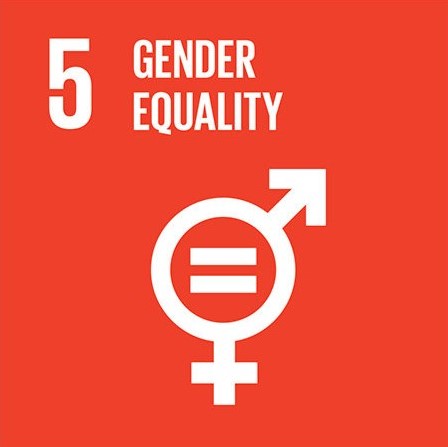One of the crucial emotional intelligences is “Resilience.” It is a quality to recover from difficulties and keep your calm in the face of challenges. After our previous workshop on “Dynamics of Challenges,” we discussed the next topic for moving forward from the challenge, which was “Resilience.”
We learned different tools to build resilience, emotional intelligence, and self-compassion. We also had the honor to have Sabira Mehrin Saba, founder of “Wonder Woman,” a travel company solely dedicated to women. She shared her struggles and the techniques she uses to overcome them.
What is Resilience?
According to the American Psychological Association (APA) Psychology Dictionary, “Resilience is the process and outcome of successfully adapting to difficult or challenging life experiences, especially through mental, emotional, and behavioral flexibility and adjustment to external and internal demands.”
For example, after a tragic event, a person can stop living a normal life. But after a certain period, they need to stand up and rebuild their lives. The process behind this is resilience. It is not easy. It takes time to build this quality but it is necessary.
Ice-breaking Session
Like every other workshop, we started our session with some fun, ice-breaking games. For the first activity, we requested the participants to take a screenshot of the session and post them on the Bold and Becoming group. This activity was helpful to interact with them and make them comfortable for the upcoming segments.
Fun Fact Sharing
This one was our unique ice-breaking session. For this activity, we asked them to share one fun fact about them with the next person on the chat list.
For example, one participant does not like black coffee. Another one, can not function without a black coffee. Our participants enjoyed this part very much. It was a great way to get to know each other.
Iceberg-illusion
Success is like an iceberg illusion. We see the upper layer of it. Achievements, wealth, fame, etc. But what we often don’t see is the layer beneath success. Hard work, failure, rejection, sacrifice, time-often these elements remain unseen.
Exercise:01 Support Tree
To be successful in life, we need a strong support group. For our first exercise, we guided the participants to write down the 3 persons in their lives who had always supported them. They could be family, friends, mentors, anyone. We requested the participants to call them to thank them. It was an emotional and beautiful surprise for most of them.
Exercise:02 Act of Gratitudes
Life is not easy. Bad things will happen. Despite that, one needs to be grateful for whatever they have. This attitude of gratitude will lead them to a content life. In our 2nd exercise, we requested the participants to write down at least three things they were grateful for. For example, it can be the weather, the food they get to eat, or the house they live in.
Exercise:03 Feelings Planner
For building resilience, we need to accept our feelings first. Then we need to understand how to take care of those feelings. In our “feelings Planner” exercise, we guided the participants to check on their feelings. We told them to write down a difficult situation from last week. We further asked them to name the emotion they felt and how they reacted to it. Lastly, we suggested that they acknowledge their feelings and to plan ahead another way to channel them by promoting positive emotion and action.
For example, if someone got fired, they would feel angry, sad, and frustrated. In reaction, they might cry. Another way could be to acknowledge their anger or frustration and may be to use 5-second breathing practice or a cold shower. By practicing different coping mechanisms, one can build resilience.
Exercise:04 How Would You Treat Your Friend or “pooja apu- (the facilitator)?
Oftentimes, the way we treat ourselves in difficult times is very different from how we treat others in the same situation. Suppose, if someone is feeling low because of their looks, we try to encourage and make them feel better by focusing on their strengths. However, when the same things happen to us, we tend to be more negative towards ourselves. One of the big factors of building resilience is self- compassion. This exercise encouraged the guests to put themselves in others’ shoes and cognizantly think if they would say the same things to their friends or others. It is very important to show love to own-selves the way we show it to others.
3Ps of Negative Thinking
Then we discussed with the guests about 3Ps of Negative thinking and 3Cs of cognitive behaviors.
According to Martin Seligman, there are 3Ps to negative thinking. First is personalization, which means associating negative events with yourself. Like a rejection, the person would feel that it is their fault to get rejected.
The second is pervasiveness, thinking that this one bad event will ruin everything. For our previous example of rejection, one may think it will affect their family life and relation in every area.
The last one is permanence, meaning the negative feeling will last forever. For our example with rejection, one may think that they will never get a good job or never be happy.
3Cs of Cognitive Behavior
Then we discussed the 3C’s of cognitive behavior. The first one is catching and identifying the thoughts of the emotion. Such as, the thought of never being enough. Before feeling sad about this, you need to identify the thought behind it, why are you feeling it? What evoked such a feeling?.
The second is to check- check if what you are thinking is useful or not. Is your thought of never being enough serving you any good?
The third C is to change the thought into a helpful one. For example, exchanging the negative thought of never being enough with a constructive one – such as remembering about the accomplishments one has achieved.
Exercise:05 Grounding Technique
For our last tool, we practice the 5-4-3-2-1 grounding technique. It is a calming technique to connect you with the present by exploring the five senses. Take a deep breath and complete the following steps:
5 Things you can see- such as the curtains, chairs, table, etc.
4 Things you can touch- your face, hair, pillow.
3 Things you can hear- car’s horn, water dripping.
2 Things you can smell- your coffee, and candles.
1 thing you can taste- your coffee
Exercise:06 Sharing Kindness
To conclude our session, we requested our participants to share a few kind words with the person they shared one fun fact with. It will teach them to be kind to others, even strangers. It can be as simple as saying, “take care.”
Our guest speaker Sabira Mehrin Saba shared her struggling days. She talked about how she coped with losing a loved one. For her, getting busy is her coping mechanism. She takes a certain amount of time to grieve. And then, she stands up and gets to work. She also shared her techniques for imposter syndrome. She said that she pushes herself to give her best and doesn’t take things personally.
The workshop was run by Chitralekha Kar Pooja, Founder, and Facilitator of “Bold and Becoming”, an Assurance Professional from EY, NY, USA. The workshop was hosted by the EMK center. The recorded version is uploaded on our YouTube channel. Follow our pages for more updates on our monthly workshops and webinars.
Let’s hear about your challenges. How do you practice resilience? Let us know at boldandbecoming@gmail.com.
রেজিলিয়েন্স বা দৃঢ়তা, মানসিক দক্ষতার একটি গুরুত্বপূর্ণ অংশ। যেকোনো ব্যর্থতা, বাধা অথবা খারাপ সময় দৃঢ়ভাবে মোকাবিলা করাই রেজিলিয়েন্স বা মানসিক স্থিরতা। “বোল্ড এন্ড বিকামিং” এর ৬ষ্ঠ ওয়ার্কশপে মানসিক স্থিরতা অর্জনের বিভিন্ন টেকনিক নিয়ে আলোচনা হয়েছে। বিশেষ অতিথি হিসেবে ছিলেন, নারীদের ভ্রমণ নিয়ে কাজ করা “ওয়ান্ডার ওমেন” এর প্রতিষ্ঠাতা সাবিরা মেহরিন।
ওয়ার্কশপ শুরু হয় একটি আইসব্রেকিং সেশন দিয়ে। তারপর, মানসিক স্থিরতা অর্জনের জন্য বিভিন্ন টুল বা টেকনিক যেমন নিজের সাপোর্ট সিস্টেম, গ্র্যাটিটিউড বা কৃতজ্ঞতা প্রকাশ, গ্রাউন্ডিং টেকনিক ইত্যাদি নিয়ে আলোচনা করেছি।
পার্টিসিপেন্টদের আমরা ফিলিং প্ল্যানার তৈরি করতে সাহায্য করি। যেখানে গত সপ্তাহের একটি কঠিন সময় মনে করে, সে অনুভূতি এবং তার রিএ্যাকশন বা প্রতিক্রিয়া লিখতে বলা হয়। একইসাথে, আরও ইতিবাচকভাবে কী করা যেতো, সে বিষয় নিয়ে আলোচনা করা হয়।
একই সাথে নিজের প্রতি যত্নশীল হওয়ার গুরুত্ব, মার্টিন সেলিগমেনের
নেগেটিভ থিংকিং বা নেতিবাচক চিন্তার 3P এবং কগনিটিভ বিহেভিয়ারের 3C নিয়েও আমরা আলোচনা করেছি।
আমাদের অতিথি সাবিরা মেহরিন তার কঠিন সময়ে কীভাবে নিজেকে সামলিয়েছেন তা আমাদের সাথে শেয়ার করেছেন। একটা নির্দিষ্ট সময় তিনি শোক প্রকাশ করেন এবং তারপর ব্যস্ততাই মূলত তাকে সামনে এগিয়ে নিয়ে যায়। ইমপোস্টার সিনড্রোম নিয়ে বেশি না ভেবে তিনি নিজের সর্বোচ্চ দেওয়ার চেষ্টা করেন।
ওয়ার্কশপটি EY, NY, USA-এর একজন অ্যাসুরেন্স প্রফেশনাল “বোল্ড অ্যান্ড বিকামিং”-এর প্রতিষ্ঠাতা এবং ফ্যাসিলিটেটর চিত্রলেখা কর পূজা পরিচালনা করে। এর আয়োজন করেছে ইএমকে সেন্টার। রেকর্ডিংটি আমাদের ইউটিউব চ্যানেলে আপলোড করা হয়েছে।
বিভিন্ন কঠিন সময়ে আপনি কীভাবে মানসিক স্থিরতা অর্জন করেন? আমাদের সাথে শেয়ার করুন-boldandbecoming@gmail.com-এ।



